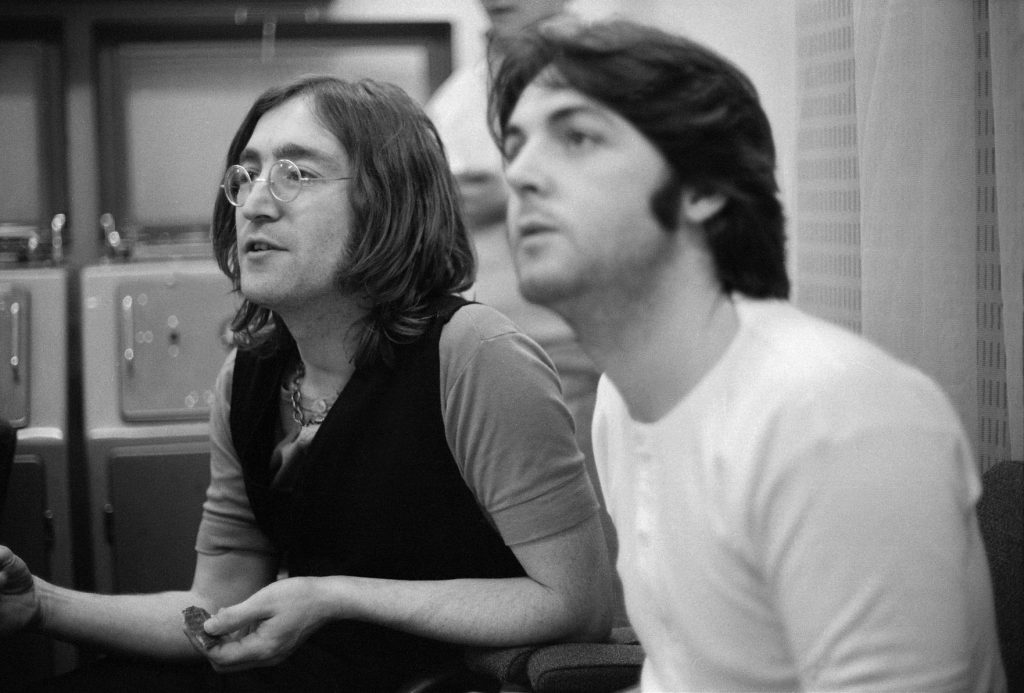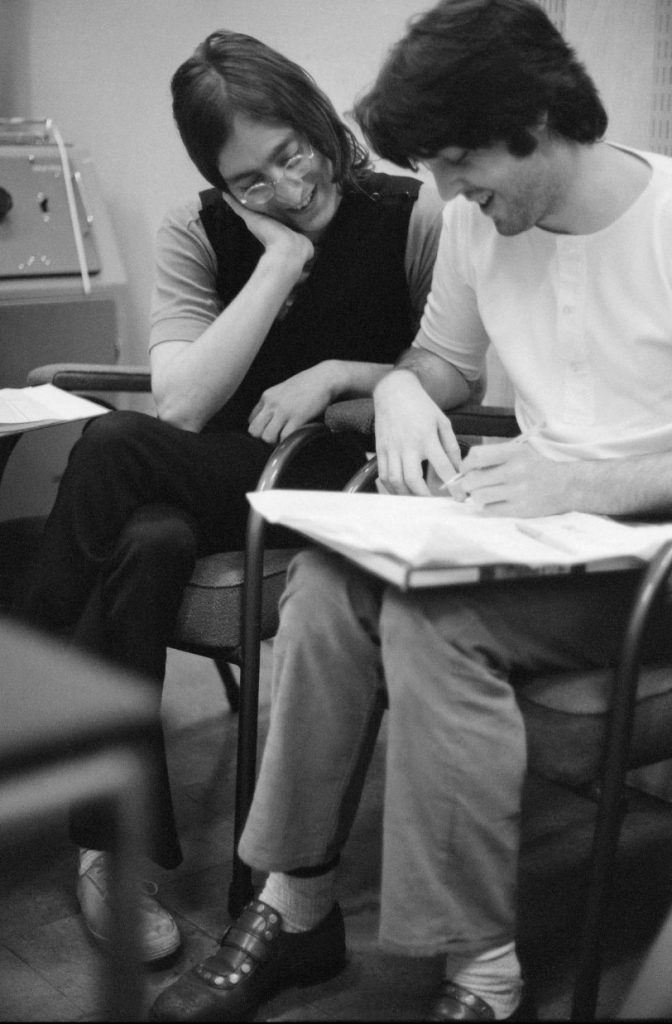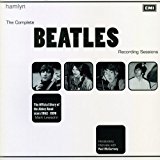Part of
"The Beatles" (aka the White Album) sessions
May 30 - Oct 18, 1968 • Songs recorded during this session appear on The Beatles (Mono)
- Album Songs recorded during this session officially appear on the The Beatles (Mono) LP.
- Studio:
- EMI Studios, Studio Two, Abbey Road
- Studio:
- EMI Studios, Studio One, Abbey Road
- Studio:
- EMI Studios, Studio Three, Abbey Road
- Studio:
- EMI Studios, Room 41, Abbey Road
- Studio:
- EMI Studios, Room 42, Abbey Road
Timeline
More from year 1968
Some songs from this session appear on:
Spread the love! If you like what you are seeing, share it on social networks and let others know about The Paul McCartney Project.
About
This was the final mixing session for the White Album and the longest session ever done by The Beatles. They entered the studio on October 16 at 5pm, to leave it on October 17 at the same time, for this 24 hours long session.
Can you recall the very last session you did with the Beatles as an entire group?
The last session was the one I wrote about in the book, which literally lasted about 24 hours. We had to finish the White Album because George was leaving to go to LA. And because it was the first release on Apple, it had to be delivered on time. There was a deadline and we had to get it completed. It was ultimate mayhem. We were using every studio, every room we possibly could; everyone was doing different things from John Smith in one room putting the album in order. Then in another room there’d be, say Chris Thomas and John, I think it was, listening to the running order and passing comment. Then it would go back to John and he’d say, “No, change it this way.” I was in another studio mixing something with Paul. Just all over the place like that. That was the last session I did with all four.
Ken Scott – From Beatles’ recording engineer Ken Scott reveals behind the scenes details on working with The Fab Four | Daytrippin’ Beatles Magazine, 2012
I remember arriving at the studios on Thursday 17 October 1968, 9am, to find the Beatles still there. They had been there all night, finalising the master tapes for what we now call the White Album and banding it up [putting the songs in order and editing the master]. They were all over the place, room 41, the front listening room – anywhere – almost every room they could get. It was a frantic last minute job.
Alan Brown – from The Beatles Recording Sessions, by Mark Lewisohn
George Harrison and Ringo Starr didn’t attend the session, George being in the US to produce Jackie Lomax’s LP and Ringo being on holiday.
Paul McCartney, John Lennon, George Martin and engineers Ken Scott and John Smith occupied the three Abbey Road Studios (as well as two extra rooms) to decide the final running order of the album, and mix various crossfades and some editing.
[On] Monday, October 14, Ringo and his family left for their holiday in Sardinia. On Wednesday, George joined me and Jackie Lomax in America. And meanwhile Paul and John got together with George Martin to do all the final re-mixing of the tapes and decide what order to put everything in on the two LP discs. A couple of other last-minute songs just couldn’t be recorded in time – “Polythene Pam” and “Maxwell’s Silver Hammer” – but that needn’t worry anybody because the fellows already had too much rather than too little material to fill the four extra-long sides of the November LP records
Mal Evans – From the Beatles Monthly Book, N°64, November 1968
At this stage, they decided to drop Lennon’s song “What’s The New Mary Jane“. “Not Guilty” from George Harrison didn’t make the cut neither, but the decision had been taken earlier (no proper mono or stereo mixes were done after the last overdub session on August 12).
NOT GUILTY – This is one of two August recordings you WON’T hear on the new album because they were dropped at the last minute in favour of more recent numbers. Written and sung by George. Interesting note – he used Lucy for the first time on this session. Lucy is the fantastic solid red Gibson guitar which was given to George at the beginning of August by Eric Clapton. […]
WHAT’S THE NEW MARY JANE – Again a recording you WON’T hear on the new LP, but I thought you’d like to have my notes on it in any case. Very strange this one. John thought it up and John sings it. Outbreaks of raucous laughter here and there and many instrumental sounds. Gets quite chaotic at times but it’s a controlled sort of Lennon chaos! The theme of the words? Well, you listen and you decide but it’s a shame Mary Jane had a pain at the party!
Mal Evans – From the Beatles Monthly Book, N°64, November 1968
Also, there apparently were some debates for the inclusion of John’s “Revolution 9“:
When they were sequencing the ‘White Album,’ I heard through the grapevine that John and Paul ultimately had a huge row over ‘Revolution 9.’ Paul absolutely did not want it on the album, and John was just as adamant that it would be on there. In the end, of course, he got his way.
Geoff Emerick – From “Here, There and Everywhere: My Life Recording the Music of The Beatles“, 2006
They created an approximated structure for the album following those “rules”:
- Each of the four sides began with a strong song
- Each side contained a George Harrison song
- No composer had more than two songs in succession
- Each side lasted between 20 and 25 minutes
As a joke, they also group together songs with an animal in the title (“Blackbird“, “Piggies“, “Rocky Raccoon“).
Once the approximated structure agreed, they started to work on links between songs. Like on Sgt Pepper’s Lonely Hearts Club Band, the Beatles didn’t want gaps between songs, and they opted for either crossfades or straight edits.
During the process, they also decided to include a 28-second long portion of the “Can You Take Me Back” ad-lib song snippet recorded on September 16. It was edited onto the end of “Cry Baby Cry” on both the stereo and mono mixes.
They started doing those crossfades and edits for the mono version of the album, also creating a mono mix of “Why Don’t We Do It In The Road?” in the process. They then repeated the work for the stereo version. At the end of this session, the stereo mix of the White Album was completed. A couple of adjustments would be done on the mono mix the day after.
“Why Don’t We Do It In The Road?”, the Paul McCartney song recorded on October 9 and 10, was also mixed in mono and stereo on this day. The one noticeable difference between the mixes is that the handclaps are missing in the introduction on the mono mix.
Some time was also spent by engineers Ken Scott and Dave Harries, to work on the 1967 unreleased track “It’s All Too Much“. The George Harrison-penned track was recorded on May 25, May 31, and June 2, 1967. On October 12, 1967, it was mixed in mono and stereo. The mono mix was lasting 8:15 and the stereo mix 6:22.
On this day, a copy of Take 2 was made and numbered Take 196 for whatever reason. New Remix Mono 1 and Remix Stereo 1 were then created.
“It’s All Too Much” was never considered for inclusion on the White Album though, and it would be released on the “Yellow Submarine” soundtrack in 1969.


Last updated on April 19, 2023
Songs recorded
1.
Crossfades and edits for LP
Mixing • Mono mixing
2.
Why Don't We Do It In The Road?
Mixing • Mono mixing - Remix 1 from take 6
3.
Crossfades and edits for LP
Mixing • Stereo mixing
4.
Why Don't We Do It In The Road?
Mixing • Stereo mixing - Remix 1 from take 6
5.
6.
7.
Written by George Harrison
Mixing • Stereo mixing - Remix 1 from take 196
Album Officially released on Yellow Submarine (Stereo)
Staff
Production staff
- George Martin:
- Producer
- Ken Scott:
- Engineer
- Dave Harries:
- Second Engineer
- John Smith:
- Second Engineer
Going further
The Complete Beatles Recording Sessions • Mark Lewisohn
The definitive guide for every Beatles recording sessions from 1962 to 1970.
We owe a lot to Mark Lewisohn for the creation of those session pages, but you really have to buy this book to get all the details - the number of takes for each song, who contributed what, a description of the context and how each session went, various photographies... And an introductory interview with Paul McCartney!
The fourth book of this critically acclaimed series, "The Beatles Recording Reference Manual: Volume 4: The Beatles through Yellow Submarine (1968 - early 1969)" captures The Beatles as they take the lessons of Sgt. Pepper forward with an ambitious double-album that is equally innovative and progressive. From the first take to the final remix, discover the making of the greatest recordings of all time. Through extensive, fully-documented research, these books fill an important gap left by all other Beatles books published to date and provide a unique view into the recordings of the world's most successful pop music act.
If we like to think, in all modesty, that the Paul McCartney Project is the best online ressource for everything Paul McCartney, The Beatles Bible is for sure the definitive online site focused on the Beatles. There are obviously some overlap in terms of content between the two sites, but also some major differences in terms of approach.




Contribute!
Have you spotted an error on the page? Do you want to suggest new content? Or do you simply want to leave a comment ? Please use the form below!